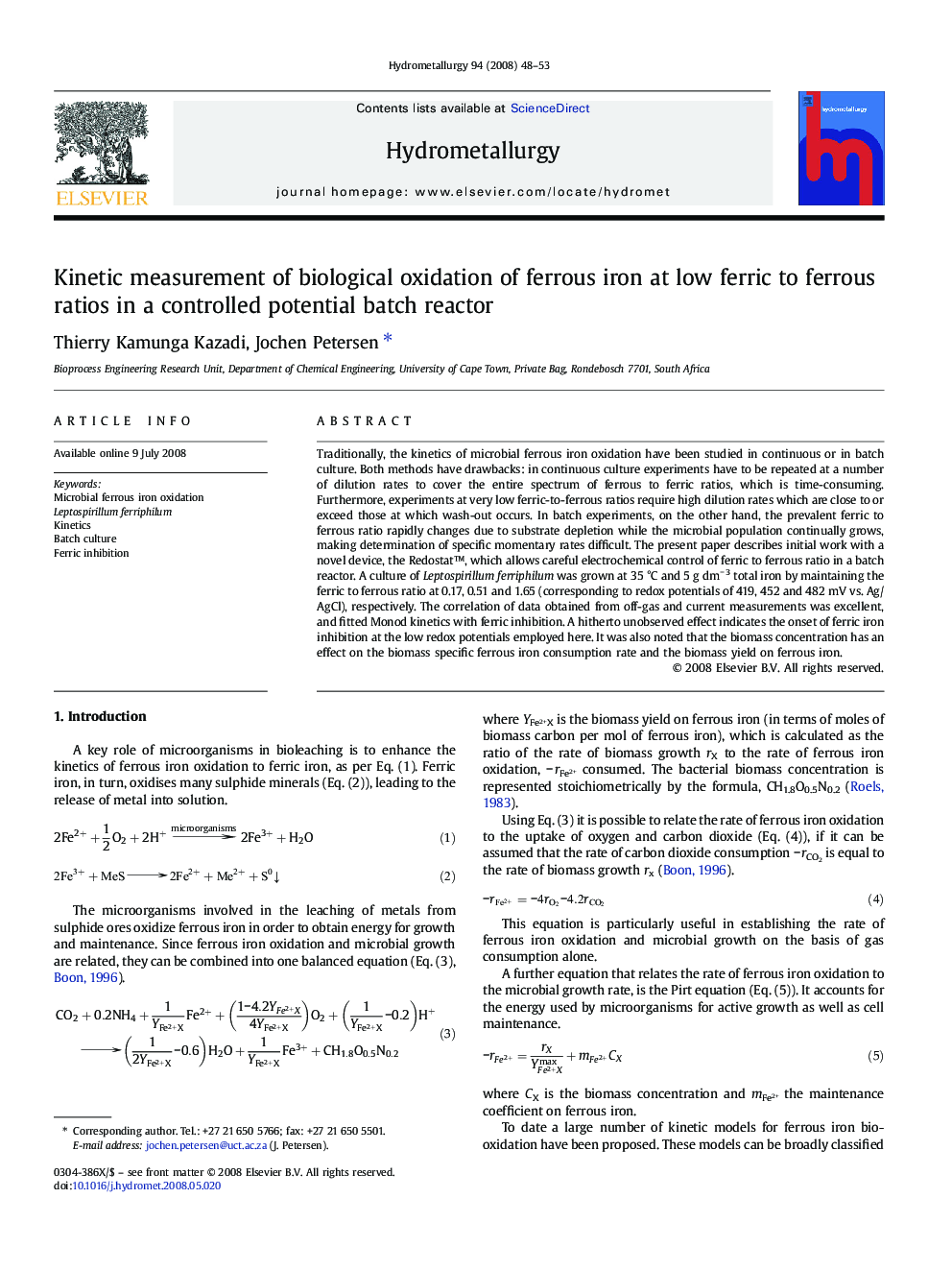| Article ID | Journal | Published Year | Pages | File Type |
|---|---|---|---|---|
| 213215 | Hydrometallurgy | 2008 | 6 Pages |
Traditionally, the kinetics of microbial ferrous iron oxidation have been studied in continuous or in batch culture. Both methods have drawbacks: in continuous culture experiments have to be repeated at a number of dilution rates to cover the entire spectrum of ferrous to ferric ratios, which is time-consuming. Furthermore, experiments at very low ferric-to-ferrous ratios require high dilution rates which are close to or exceed those at which wash-out occurs. In batch experiments, on the other hand, the prevalent ferric to ferrous ratio rapidly changes due to substrate depletion while the microbial population continually grows, making determination of specific momentary rates difficult. The present paper describes initial work with a novel device, the Redostat™, which allows careful electrochemical control of ferric to ferrous ratio in a batch reactor. A culture of Leptospirillum ferriphilum was grown at 35 °C and 5 g dm− 3 total iron by maintaining the ferric to ferrous ratio at 0.17, 0.51 and 1.65 (corresponding to redox potentials of 419, 452 and 482 mV vs. Ag/AgCl), respectively. The correlation of data obtained from off-gas and current measurements was excellent, and fitted Monod kinetics with ferric inhibition. A hitherto unobserved effect indicates the onset of ferric iron inhibition at the low redox potentials employed here. It was also noted that the biomass concentration has an effect on the biomass specific ferrous iron consumption rate and the biomass yield on ferrous iron.
